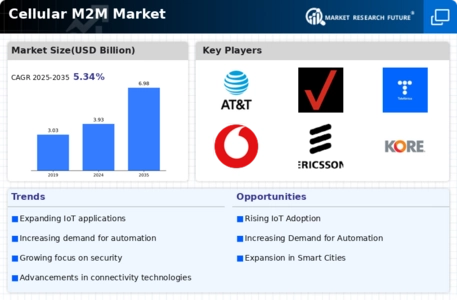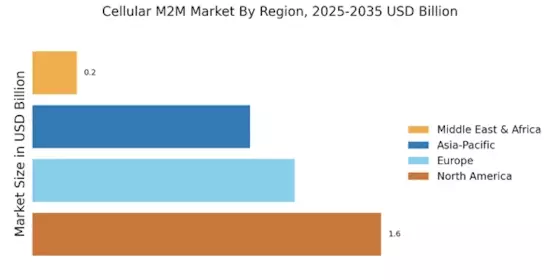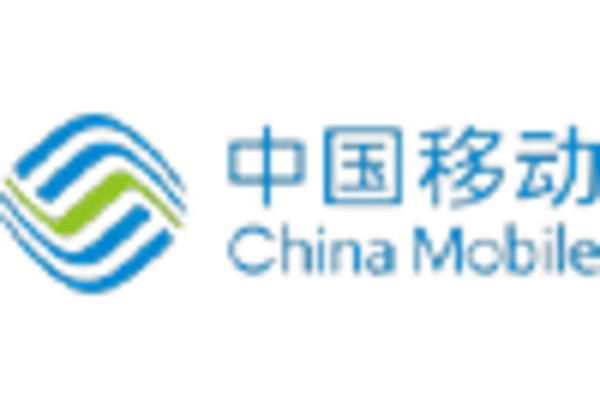Leading market players are investing capital and resources across research and development in order to extend their product offerings, this is expected to help the Cellular M2M Market, grow even more. Market participants and manufacturers are also adopting various strategic activities to grow their worldwide presence, with vital market developments including new product developments & launches, contracts & agreements, mergers & acquisitions, increased investments, and collaboration with other similar organizations. To expand and survive in a more competitive and rising market climate, Cellular M2M industry must offer cost-effective items.
The manufactures are making use of locally available resources to minimize the production costs which will aid the growth of the Cellular M2M industry to benefit clients and increase the market sector. In recent years, the Cellular M2M industry has offered some of the most significant advantages to medicine.
Major players in the Cellular M2M Market, including AT&T (U.S.), Verizon (U.S.), T-Mobile (U.S.), Deutsche Telekom ( Germany ), Orange S.A. ( France ), Telefonica ( Spain ), Vodafone (U.K.), Ericsson ( Sweden ), Kore Wireless (U.S.), Aeris (U.S.), Arm holdings (U.K.), China Mobile ( China ), Infineon ( Germany ), Thales Group ( France ), Orbocomm (U.S.), Telit (U.K.), Giesecke+Devrient ( Germany ), Cubic Telecom ( Ireland ), KPN ( Netherlands ), A1 Digital ( Austria ), S.K.
Telecom ( South Korea ), Rogers Communications ( Canada ), Telenor Connexion ( Sweden ), Truphone (U.K.), and 1oT ( Estonia ), and others, are attempting to increase market demand by investing in research and development operations.
Telit Communications Ltd (Telit), formerly known as Telit Communications PLC provides Internet of Things goods and services. The business the corporation is in is wireless technology communication and machine-to-machine (M2M). In addition to cellular communication modules across all technologies, GNSS, short- to long-range wireless modules, IoT connectivity plans, and IoT platform services, it also offers a portfolio of integrated products and services for end-to-end Internet of Things (IoT) deployments. The business provides services to the transportation, health care, retail, and agricultural industries. IoT Modules, IoT Platforms, and IoT Connectivity-related products and services are also available.
In July 2022, Together, Telit and Thales stated that they had signed a legal contract under which Telit will buy Thales' cellular IoT solutions. The anticipated transaction covers Thales's whole line of 4G LTE, LPWAN, and 5G cellular wireless communication modules, gateways, and data (modem) cards.
Infineon Technologies AG (Infineon) offers semiconductor solutions. The business creates, develops, produces, and sells application-specific integrated circuits. It provides products for radio frequency, sensors, interfaces, microcontrollers, and transistors. The company's products are used across various industries, including automotive, industrial power control, consumer electronics, computers and data storage, switches and routers, sensing systems, and security in Internet of Things applications. In March 2019, Denver, Colorado, a partnership between technology solutions provider Arrow Electronics and Infineon and Arkessa will allow Arrow to help customers with cellular communications for the Internet of Things (IoT) even more.


















Leave a Comment